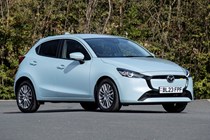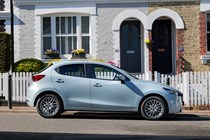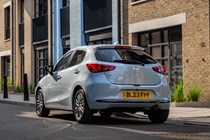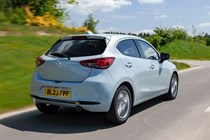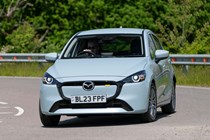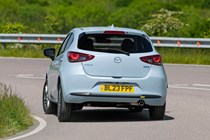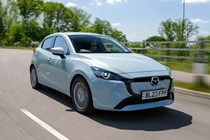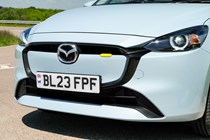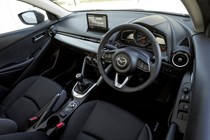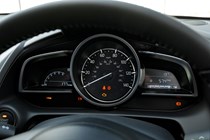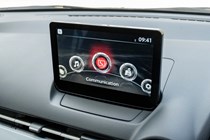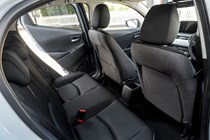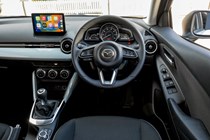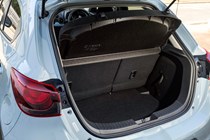
Mazda 2 Hatchback (2015-2025) engines, drive and performance
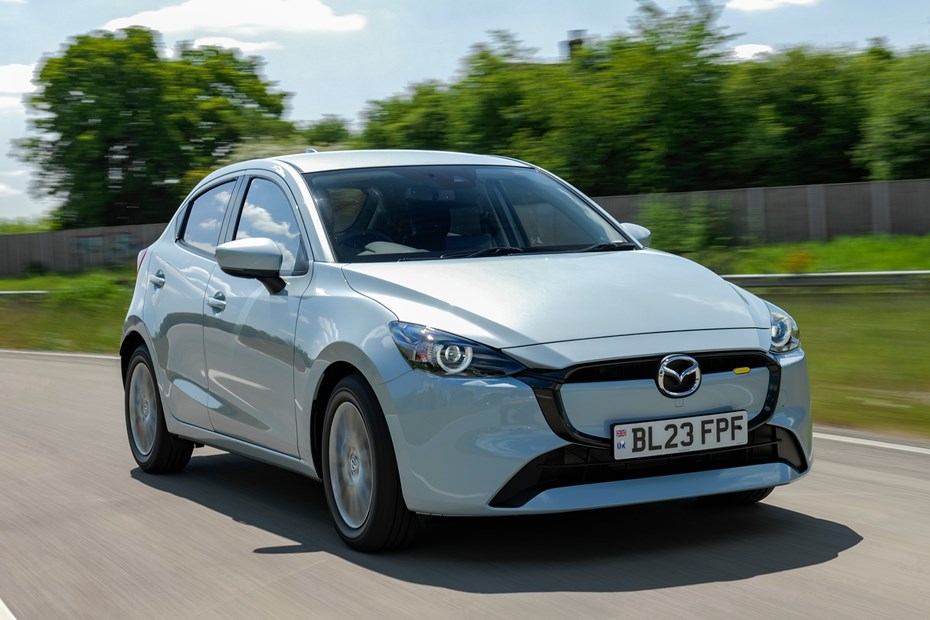
- Petrol-only engine range
- Supported by mild hybrid tech
- Three power outputs
Petrol engines
All three engines in the Mazda 2 range are based on the same 1.5-litre four-cylinder petrol unit. They mid-range and top-spec models both feature mild hybrid assistance, meaning there’s a small electric motor mounted to the engine that helps it to turn over, thus improving your fuel economy.
The entry-level model has 75hp (and no mild hybrid tech). If you rarely leave the confines of your town, it has just enough poke to keep up with traffic without thrashing your eardrums to shreds.
However, if you want to go further afield in a Mazda 2, we suggest you get used to changing gear often. You’ll find yourself constantly paddling through the gearbox to make the most of what little power the engine has. But this isn’t a such a bad thing because the transmission is joy to use. It’s notchy and precise.

There’s a 90hp engine in the middle of the Mazda 2 range. It’s the most popular choice – and it’s easy to see why. The extra 15hp, teamed with a healthy increase in torque, liberates more performance. 0–62mph takes an almost spritely 9.8 seconds, compared to 11.3 seconds with the 75hp model.
However, it’s worth noting that the engine’s peak torque figure doesn’t arrive until 3,500rpm, so you still need to work the gearbox hard to get the best from the engine.
If all that gear changing sounds tiresome, Mazda also sells the 90hp with a six-speed automatic gearbox. Like other Mazda automatics, it’s very smooth – but it does suck both performance and fuel economy out of the 90hp engine. 0–62mph takes a glacial 12.1 seconds, while your best case WLTP fuel economy figure plummets from 60.1mpg to 52.3mpg.
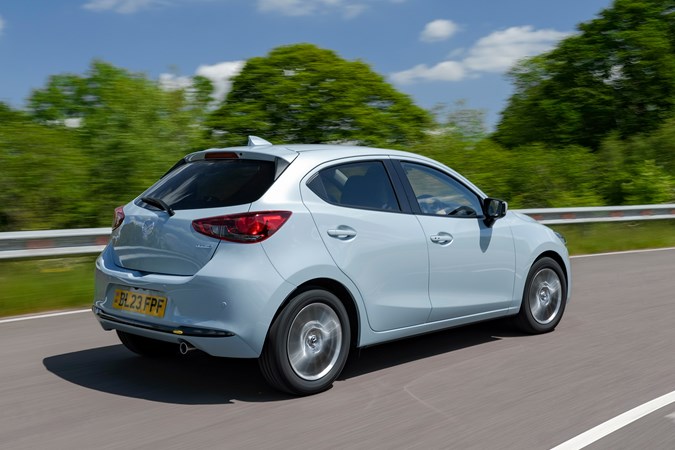
At the top of the range is a 115hp engine. It’s exclusively available with Mazda’s heady Homura Aka trim level – and it zips the 2 along very nicely. It’s demonstrably quicker than the lesser engines, with a little more mid-range grunt and a slightly quicker 0–62mph time of 9.1 seconds.
For these reasons, we reckon it’s the engine to have if you spend a lot of time on the motorway. However, if you are regularly trudging up and down the British highways, we’d recommend opting for a Skoda Fabia instead, as it’s available with a more potent turbocharged engine.
What’s it like to drive?
- Light controls and tidy handling
- Small engines need working hard
- Still manages to be comfortable
In 2022, we didn’t hold the Mazda 2’s handling characteristics in particular regard. That’s because the Ford Fiesta was still on sale so, if all you wanted was a supermini that drove well, it was completely pointless looking anywhere else. Every rival paled in comparison.
But the Mazda 2 now finds itself in an interesting position. The Ford Fiesta has been axed and competitor brands such as Skoda and Renault have started to sell their most powerful superminis without the option of a manual gearbox. It’s automatic or nothing if you want reasonable performance – and that simple decision eliminates an awful lot of the fun you can have with this sort of car.
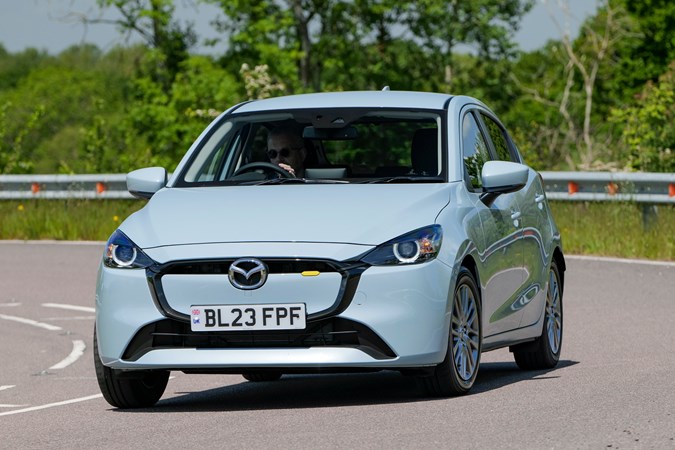
By comparison, the Mazda 2 is delightfully old school. It has far less horsepower than its rivals, which means the driver must constantly stir through the gearbox to make sure every single pony is being used to its full potential. Want to join a motorway? You can’t just floor the throttle and let the torque from the turbo punt you onto the carriageway like you would in a Fabia. You need to plan your entrance like you’re Lando Norris sizing up a do-or-die overtake on the last lap at Silverstone. And for a petrolhead, this is great fun.
The Mazda 2 also compensates for its rather weedy engines with a surprisingly sticky chassis. Its tyres cling to the road admirably as you approach the limits of grip, at which point it’ll gently wash wide to let you know you’re being a pillock. Body roll is neatly controlled, too, even during rapid direction changes. That makes the little Mazda feel stable and planted.
Ride quality is good at urban speeds, but there’s just enough beef in the dampers to ensure you aren’t thrashed around the cabin like a slipper in a terrier’s maw when you pass over a series of potholes. The ride does worsen slightly as you build speed, though. There’s a noticeable amount of bounce at 70mph, meaning those covering huge motorway miles will likely be better served by the Skoda Fabia or Honda Jazz.

The 2’s steering setup will probably leave die-hard, petrol-swilling sports car enthusiasts cold, but it isn’t really any less communicative than its main rivals. In fact, it’s probably a touch more talkative than the Fabia’s steering system, which helps you to make the most of the available grip.
All the 2’s controls are well-weighted, too. They err on the lighter side of engaging to make the car easy to use in the city, but there’s just enough density to them to be fun. We like the gearbox too. The shifter has a pleasing mechanical feel, which is great considering how often you need to use it.


